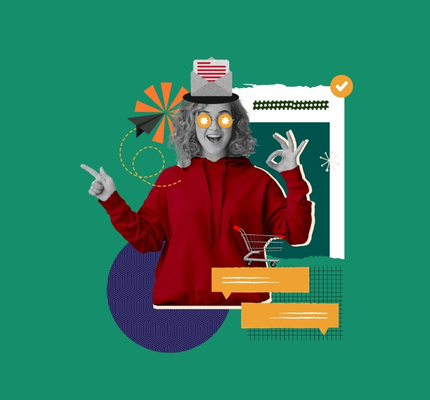
Article
Forecasting the future through periods of chaos
By Petah MarianAs much as I hate the word disruption…Foresight and trend forecasting are areas that rely on a huge amount of data in order to make our predictions. Some…
By Petah Marian
As much as I hate the word disruption…
Foresight and trend forecasting are areas that rely on a huge amount of data in order to make our predictions. Some predictions are relatively linear and, in retrospect, seem easy to predict. For instance, a growing population alongside a lack of investment in new housing is likely to lead to a housing crisis.
These challenges are likely to remain challenges even as we experience disruptive moments like the ones presented by the pandemic over the last year and a half.
But when your focus is on forecasting less linear or tangible things, like values, ways of living and the kinds of products people will want to buy in two or ten years, those traditional sources of data, which use past actions to predict future desires, become less useful.
We are living in a BANI (Brittle, Anxious, Nonlinear, and Incomprehensible) landscape. BANI is a framework coined by fellow futurist Jamais Cascio to replace the VUCA (Volatile, Uncertain, Complex, and Ambiguous) framework.
Cascio describes this as a way of articulating “the increasingly commonplace situations in which simple volatility or complexity are insufficient lenses through which to understand what’s taking place. Situations in which conditions aren’t simply unstable, they’re chaotic. In which outcomes aren’t simply hard to foresee, they’re completely unpredictable. Or, to use the particular language of these frameworks, situations where what happens isn’t simply ambiguous, it’s incomprehensible.”
What has become increasingly clear to people and organisations is that we are no longer living in a linear landscape, where people’s lives largely follow similar patterns on a day-to-day basis, which makes forecasting the future even more challenging.
As the pandemic got underway, many prior forecasts around technology, anxiety, telehealth, localism and emotional isolation accelerated, with technology uptake vaulting forward five years through the pandemic. As countries emerge into their varied next versions of normal, predicting what will return to pre-covid levels and what will be different has never been more difficult, as many different signals emerge. The data that companies relied on in 2019 and 2020 does not necessarily reflect our future possible reality. And with countries recovering at different rates, regional differences are widening.
But big data and predictive analytics are increasingly being used as a means of giving people false confidence about the path forward in a BANI landscape, but mean that they might miss the more disruptive (sorry) shifts taking place. (And this is not to be anti-data, because I’ve just spent a year and a half studying to become a qualified data scientist.)
Correctly forecasting shifts is requiring not just more data to join the dots between different elements of a person’s experience, but also more creativity, to see the links between what’s possible from a technology standpoint, what’s likely from an economic standpoint, but also what are the likely attitudinal and emotional responses.
Consumer-facing innovation is wonderful, but has to be presented at a time and in a way that consumers will respond positively to.
Asking people what they want is not always the best route forward either — there are huge gaps between what people say and what they do. Ask the average person if they want to buy sustainably and a majority tend to say yes. But when you look at the purchasing behaviour, you’ll find another reality entirely (which is largely tied to purchasing power).
This is where companies and organisations need to look more both at the big data that they’ve been collecting (to manage shifts in demand or preference) but also at other forms of less quantitative research, taking into consideration the disruptive shifts that are likely to continue to take place in the coming years.
But some combination of all of the above is what works. If you were a business serving Gen Z, understanding a few years ago that:
- Sustainability is important to this generation
- The rise of streaming services means that people are less attached to owning physical items
- Young people have less disposable income than prior generations
- They are responding to their lack of prospects by becoming more entrepreneurial
You would have the insight to justify investing in second-hand retail platforms, a segment of the fashion sector that is predicted to eclipse the size of the fast-fashion segment of the market over the next decade.
If a company were to rely only on quantitative data, they’d be looking to solve the issue of declining new product sales amongst this demographic.
While developed economies might be coming through the worst of the Covid-19 pandemic, there are other challenges on the horizon that will challenge societies and companies from a BANI (Brittle, Anxious, Nonlinear, and Incomprehensible) perspective, with the climate crisis set to continue to create chaos.
As we navigate this period, trying to unpick the mixed signals around the potential futures that might emerge, there has never been a better opportunity to start to try to chart your own most preferable course – using strategic foresight, consumer insight and more speculative tools to create a resilient base that will allow them the flexibility to adapt to a rapidly changing world.
This opinion piece has been re-published with permission from Petah Marian of Future Narrative.

